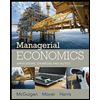Clothing companies like Vineyard Vines offer various student, teacher, military, and essential worker discounts. Let’s assume that the marginal cost of producing a classic Shep Shirt at Vineyard Vines is $30 per shirt. For people who don’t fall into the discount-eligible categories, the demand and marginal revenue equations are: Pu = 200 - .5Qu MRu = 200 – Qu For people who are discount-eligible, the demand and marginal revenue equations are given by: Pd = 150 - .5Qd MRd = 150 - Qd Assuming that price discrimination is possible, calculate the profit-maximizing price and quantity for each group of shoppers. Ignoring fixed costs, calculate the profit Vineyard Vines would be able to make on this particular item if the company is able to engage in price discrimination.
Clothing companies like Vineyard Vines offer various student, teacher, military, and essential worker discounts. Let’s assume that the marginal cost of producing a classic Shep Shirt at Vineyard Vines is $30 per shirt. For people who don’t fall into the discount-eligible categories, the demand and marginal revenue equations are:
Pu = 200 - .5Qu
MRu = 200 – Qu
For people who are discount-eligible, the demand and marginal revenue equations are given by:
Pd = 150 - .5Qd
MRd = 150 - Qd
Assuming that
Ignoring fixed costs, calculate the profit Vineyard Vines would be able to make on this particular item if the company is able to engage in price discrimination.
Trending now
This is a popular solution!
Step by step
Solved in 3 steps with 2 images









